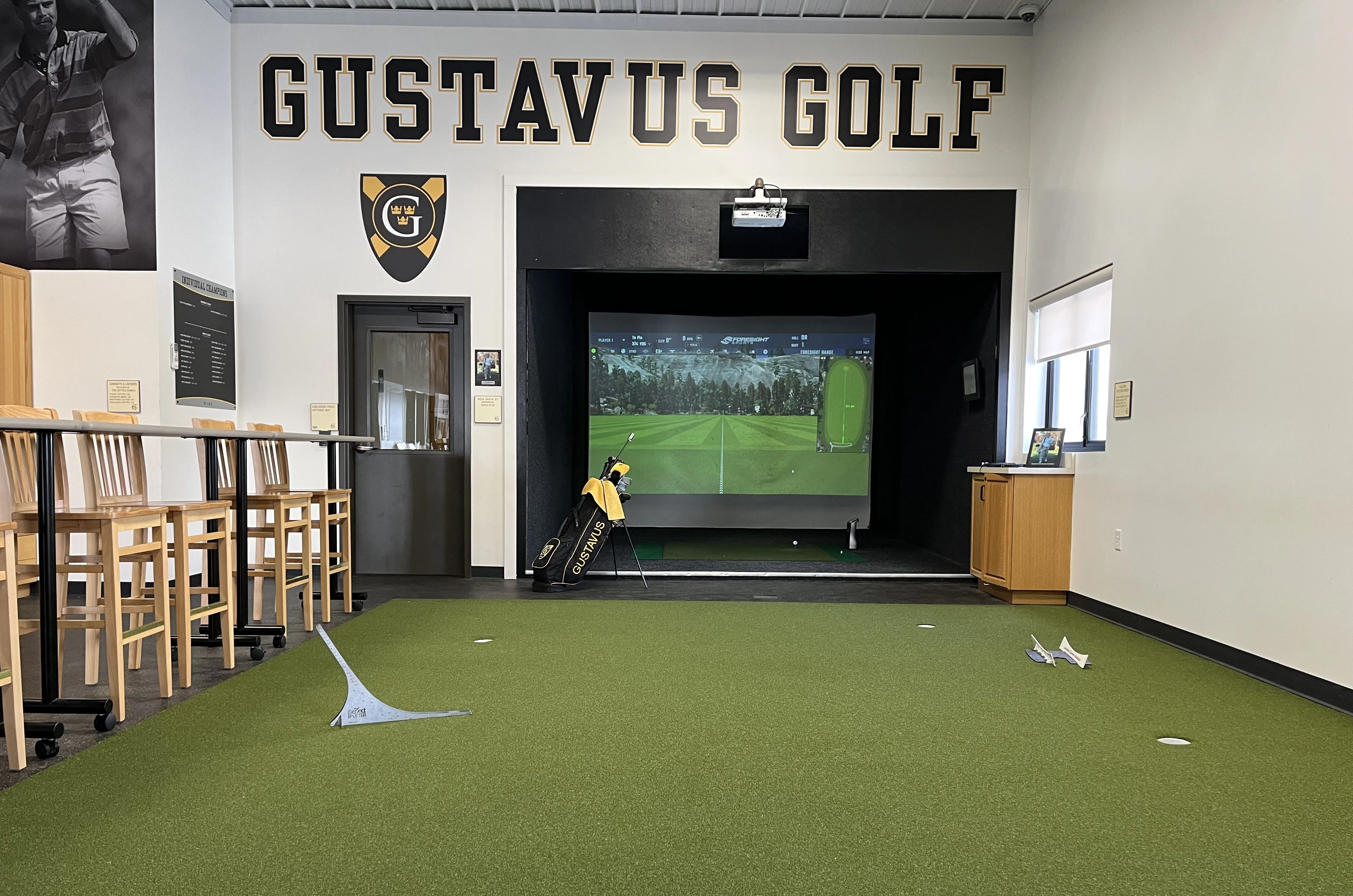Gearing up for Spring: DIII Golf
- Cameron Spraggins
- Feb 24, 2024
- 4 min read
Down in San Antonio, Texas, the D3 Golf season kicked off at the TPC San Antonio DIII Shootout from February 19th - 20th. (Shoutout to the University of Redlands for taking the win in 45 holes.) The rest of us, however, remain a little colder and a little less fortunate. Up north in Ohio, the sun has peeked its head out and the snow has started to melt. We're not there yet, but the winter pins and the snow banks in the bunkers tell me spring golf is coming.
As the second semester commences, Division III golf programs across the country are gearing up for the spring season – and most of them indoors. Though not every school, the majority of the Division III programs in the United States reside in the northern states and are not privy to twelve months of outdoor golf. For many, this is not an inconvenience but rather a source of pride, as the winter months provide an opportunity to reset indoors and address fundamental weaknesses with the help of a new generation of golf technology.
Division III golfers, both past and present, can recall the challenges of indoor practices, often constrained by space and resources. These sessions typically involved basic drills like chipping into buckets and hitting balls into nets, with limited feedback. However, modern Division III players now have access to advanced technology that provides more comprehensive analysis and feedback during practice sessions.
Today, athletes are losing a step by not embracing analytics to improve their practice, and Division III golf is no exception. The use of technology, especially during the offseason, is now an indispensable aspect of training. Golfers who can take advantage of launch monitors, simulators, and putting-analysis software to provide feedback to their practice are better prepared to succeed. Consequently, DIII programs have invested in indoor facilities equipped with this technology.
In January, Golfweek’s Cameron Jourdan published an article highlighting some of the best indoor college golf facilities across the country, and not without some DIII representation. Gustavus Adolphus College’s Drenttel Golf facility in St. Peter, Minnesota, was featured alongside some of the premier programs and facilities in the country, underscoring the quality that can be found at the DIII level. Beyond Gustavus, numerous other DIII programs boast top-notch facilities.
Photo: GolfWeek, Gustavus Adolphus College.
Last month, we asked the DIII golf community on social media to share some photos and videos of their practice facilities this offseason. Programs including Kenyon College, York College of PA, and Aurora University, among others, shared tours of their practice facilities – each housing their own variety of simulators, putting greens, locker rooms, player lounges, and even workbenches for clubs. Twenty years ago, this type of player accommodation was found only at the Division I level – now it is commonplace at the Division III level.
In the past, game-improvement equipment was neither as accessible nor affordable for DIII programs. However, the landscape has evolved, with launch-monitoring technology from companies like Trackman and Foresight asserting themselves on the scene. Not without significant fundraising, DIII programs are recognizing the necessity to provide these facilities in order to keep up with the pace of competition.
Originating on professional tours, the use of launch monitoring technology has trickled down and become standard for DIII programs nationwide, evolving from a recruiting advantage to a virtual necessity. On our December podcast with Aurora University Head Coach Justin Wyeth, he had this to say about indoor practice:
“We have to have indoor facilities. We have to have opportunities and different setups in different places. I believe indoor practice is better than outdoor practice. It's not a sell anymore. We're using data to improve indoors rather than taking for granted the opportunity to play golf every day.”
Wyeth was not taking shots at schools that can play golf year-round (we envy the California and Texas D3’s), but rather asserting the benefits of indoor practice. If used with intention, the technology at your disposal for indoor practice can yield better off-season improvement than a winter spent on the golf course.
Depending on the program, at any given day of indoor practice, you can find players playing 18 holes on a top-notch simulator, improving their putting stroke with technology like PuttView, refining wedge distances with launch monitors, or speed training, all with the help of a new generation of golf technology. The resources available for players to improve are much greater, but so too is the expectation to improve.
Beyond game improvement, providing players with a space not only for practice but also for camaraderie and academic pursuits is essential. Unlike our Division I counterparts, Division III players do not receive athletic scholarships, meaning our success in college is not solely dependent on our performance on the golf course. Offering a dedicated space for players to engage in academic and extracurricular activities alongside their teammates is crucial. For college programs, investing in indoor facilities embodies the values that drive DIII golfers: a passion for the game, a love of competition, and the character development fostered through our collegiate experience.
Check out some of the facilities shared with us below. For video tours of Kenyon College, John Carroll University, and York College facilities, among other programs, check out our thread on X here.



コメント